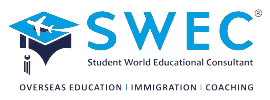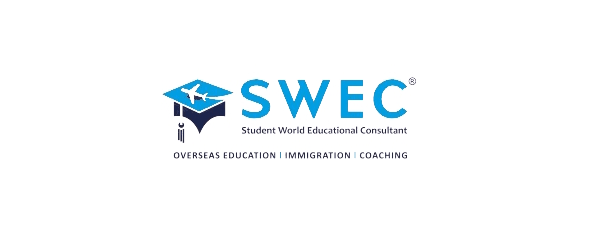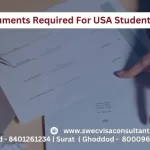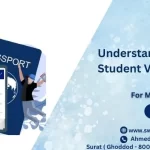The United States is one of the most sought-after destinations for students, professionals, and families looking for better educational, career, and living opportunities. However, moving to the US alone can be challenging, especially when family members are left behind. This is where the USA Dependent Visa plays a crucial role, allowing dependents of visa holders to join them in the US.
Whether you are a student on an F-1 visa, a skilled worker on an H-1B visa, or a permanent resident (Green Card holder), you can bring your spouse, children, or other eligible family members through a dependent visa. These visas provide opportunities for families to stay together, access certain benefits, and, in some cases, even study or work in the US.
In this guide, we will cover everything about the USA Dependent Visa, including its definition, eligibility, and benefits. If you are looking for expert guidance, SWEC Visa is here to assist you with a smooth and hassle-free dependent visa application process.
What is a USA Dependent Visa?
A USA Dependent Visa is a type of visa that allows family members of a primary visa holder to live in the United States for the duration of the principal visa holder’s stay. The main purpose of this visa is to ensure that families can stay together while one member is studying, working, or residing in the US.
Who Can Apply for a USA Dependent Visa?
The eligibility criteria for a dependent visa depend on the type of visa held by the primary applicant. The most common dependent visas allow the following family members to apply:
- Spouse: Legally married husband or wife of the primary visa holder.
- Children: Unmarried children under the age of 21.
- Parents: In certain cases, parents of US citizens or Green Card holders can apply for a family-based visa.
- Fiancé(e): Those engaged to US citizens can apply for a K-1 fiancé(e) visa to enter the US and get married.
Different categories of dependent visas apply to various visa holders, such as:
- F-2 Visa for dependents of F-1 student visa holders
- J-2 Visa for dependents of J-1 exchange visitors
- H-4 Visa for dependents of H-1B work visa holders
- L-2 Visa for dependents of L-1 intra-company transferee visa holders
- IR (Immediate Relative) and F (Family Preference) Visas for spouses, children, and parents of US citizens
If you are unsure which dependent visa applies to your situation, SWEC Visa can help you determine the right category and guide you through the application process.
Key Benefits of a USA Dependent Visa
A USA Dependent Visa offers multiple advantages, ensuring that families can live together and have access to essential benefits. These include:
✔️ Living with Family – The biggest advantage of a dependent visa is that family members can live together in the US, reducing emotional and financial burdens.
✔️ Educational Opportunities – Some dependent visas, like F-2 and H-4, allow children to attend schools and universities, ensuring a continuous education without disruptions.
✔️ Work Authorization – Certain dependent visa holders, such as J-2 and H-4 visa holders (with Employment Authorization Document – EAD), can legally work in the US, supporting their family financially.
✔️ Travel Benefits – Dependent visa holders can travel in and out of the US, allowing flexibility for family visits and vacations.
✔️ Access to Healthcare and Social Benefits – Depending on the visa type, dependents may access healthcare and other social benefits in the US.
✔️ Pathway to Permanent Residency – In some cases, dependents can apply for a Green Card if the primary visa holder qualifies for permanent residency.
Types of USA Dependent Visas: A Detailed Guide
When moving to the USA for work, study, or permanent residency, ensuring that your family can join you is a priority. The USA Dependent Visa allows spouses, children, and, in some cases, parents to live with their loved ones in the US. However, dependent visas vary based on the primary visa type, offering different rights and restrictions.
In this comprehensive guide, we will cover all types of dependent visas, their eligibility criteria, work and education rights, and the process for permanent resident and citizen dependents. If you need expert assistance in securing a dependent visa, SWEC Visa is here to help!
A. Dependent Visas for Temporary Visa Holders
Temporary visa holders in the US, such as students and skilled workers, can bring their immediate family members under specific dependent visa categories. Below are the main dependent visa options available:
1. F-2 Visa (For Dependents of F-1 Student Visa Holders)
The F-2 visa allows the spouse and unmarried children (under 21 years) of F-1 student visa holders to reside in the US.
Eligibility Criteria for F-2 Visa:
✔️ Must be the legal spouse or unmarried child (below 21) of an F-1 visa holder.
✔️ The F-1 visa holder must maintain full-time student status in the US.
✔️ Sufficient financial resources must be demonstrated to support dependents.
Rights and Restrictions of F-2 Visa Holders:
❌ No Work Permit – F-2 visa holders are not allowed to work in the US.
✔️ Limited Study Options – Spouses on F-2 visas cannot enrol in degree programs but can take non-degree or recreational courses. However, F-2 children can attend school up to high school.
✔️ Travel Allowed – F-2 visa holders can travel in and out of the US but cannot extend their stay beyond the F-1 holder’s visa duration.
2. J-2 Visa (For Dependents of J-1 Exchange Visitors)
The J-2 visa is issued to dependents (spouse and children) of J-1 exchange visa holders, who participate in research, training, or cultural exchange programs.
Eligibility Criteria for J-2 Visa:
✔️ Must be the spouse or unmarried child (under 21) of a J-1 visa holder.
✔️ The J-1 holder must maintain active exchange visitor status.
Key Benefits of J-2 Visa:
✔️ Work Authorization – J-2 visa holders can apply for an Employment Authorization Document (EAD) to work legally in the US.
✔️ Study Options – J-2 visa holders can enrol in full-time or part-time educational programs.
✔️ Access to Healthcare & Social Services – Eligible for medical insurance and other J-1 visa holder benefits.
3. H-4 Visa (For Dependents of H-1B Work Visa Holders)
The H-4 visa is issued to dependents of H-1B visa holders, who are skilled workers employed in the US.
Eligibility Criteria for H-4 Visa:
✔️ Must be the legal spouse or unmarried child (under 21) of an H-1B visa holder.
✔️ The H-1B holder must have valid employment status in the US.
Rights and Benefits of H-4 Visa Holders:
✔️ Work Authorization (EAD) – Spouses of H-1B visa holders can apply for an H-4 EAD (Employment Authorization Document), allowing them to work freely in the US.
✔️ Education Benefits – H-4 visa holders can study full-time in US universities.
✔️ Driver’s License & Bank Accounts – Eligible for a driver’s license and other essential services.
4. L-2 Visa (For Dependents of L-1 Visa Holders)
The L-2 visa is for dependents of L-1 intra-company transferee visa holders, who work for multinational companies in the US.
Eligibility Criteria for L-2 Visa:
✔️ Must be the legal spouse or unmarried child (under 21) of an L-1 visa holder.
✔️ The L-1 holder must have valid employment in the US.
Benefits of L-2 Visa Holders:
✔️ Work Authorization – L-2 spouses can work in the US by applying for an Employment Authorization Document (EAD).
✔️ Education Rights – L-2 dependents can enrol in full-time education programs.
✔️ Access to Healthcare & Other Benefits – Can access healthcare, banking, and social services.
B. Dependent Visas for Permanent Residents and Citizens
1. IR (Immediate Relative) and F (Family Preference) Visas
For family members of US citizens and Green Card holders, the US offers immigrant visa categories, such as:
✔️ IR-1 & CR-1 Visa – For spouses of US citizens.
✔️ IR-2 & CR-2 Visa – For children (under 21) of US citizens.
✔️ IR-5 Visa – For parents of US citizens (the sponsoring citizen must be 21 or older).
✔️ F-1 to F-4 Visas – For extended family members (siblings, married children).
Processing Time & Application Process:
⏳ Processing time depends on visa category (immediate relatives get priority).
? Requires sponsor’s proof of relationship and financial support.
? Filing Form I-130 (Petition for Alien Relative) with USCIS is mandatory.
2. K-1 and K-2 Visa (For Fiancé(e) and Their Children)
The K-1 visa allows a foreign fiancé(e) of a US citizen to enter the US to marry within 90 days.
Eligibility & Requirements:
✔️ Must prove a genuine relationship with a US citizen.
✔️ The US citizen must meet financial requirements to support the fiancé(e).
✔️ K-2 visas are issued for the dependent children of K-1 visa holders.
Steps to Adjust Status After Marriage:
1️⃣ Marry within 90 days of arrival in the US.
2️⃣ Apply for Adjustment of Status (Green Card) by filing Form I-485.
3️⃣ Attend a USCIS interview and receive a Green Card.
Eligibility Criteria for a USA Dependent Visa
Before applying for a USA Dependent Visa, it’s crucial to meet the eligibility requirements.
1. Relationship Proof with Primary Visa Holder
✔️ Spouses must provide a marriage certificate and proof of a genuine relationship (photos, joint accounts, etc.).
✔️ Parents and children must submit birth certificates proving their family relationship.
2. Age Limits & Marital Status of Dependent Children
✔️ Children must be under 21 years and unmarried to qualify for dependent visas.
3. Financial Requirements
✔️ The primary visa holder must show sufficient financial resources to support dependents, ensuring they won’t become a public burden.
✔️ In cases of Green Card sponsorship, a US-based sponsor must meet the minimum income threshold set by USCIS.
USA Dependent Visa Application Process
Applying for a USA Dependent Visa involves multiple steps, from gathering documents to attending the visa interview. Below is a step-by-step guide to ensure a smooth application process.
Step 1: Gather Required Documents
Before starting your application, ensure you have all the necessary documents. Missing documents can lead to delays or rejection.
✔️ Valid Passport (of dependent, valid for at least six months beyond the intended stay).
✔️ Visa Approval of Primary Applicant (copy of the primary visa holder’s visa and I-797 approval notice, if applicable).
✔️ Relationship Documents (marriage certificate for spouses, birth certificate for children).
✔️ Financial Proofs (bank statements, pay stubs, sponsor’s employment letter to confirm financial ability).
✔️ Medical Examination & Vaccination Records (if required for certain visa categories).
Step 2: Complete the DS-160 Form (Online Nonimmigrant Visa Application)
The DS-160 form is mandatory for all dependent visa applicants. This online form collects personal details, travel history, and visa-specific information.
? How to fill out the DS-160 form?
1️⃣ Visit the CEAC website: https://ceac.state.gov/CEAC
2️⃣ Select the Visa Category (F-2, J-2, H-4, L-2, etc.).
3️⃣ Fill in personal details, passport details, and visa sponsor information.
4️⃣ Upload a recent passport-sized photograph (as per US visa photo guidelines).
5️⃣ Submit the form and save the DS-160 confirmation page for the visa interview.
Step 3: Pay the Visa Application Fee
After submitting the DS-160, pay the visa application fee, which varies depending on the visa type. Payment can be made via:
? Online (Credit/Debit Card, Net Banking)
? Bank Transfer or Cash Payment at Designated Banks
? Save the Payment Receipt – It is required for scheduling the visa interview.
Step 4: Schedule a Visa Interview at the US Embassy or Consulate
All dependent visa applicants (except children under 14 years for certain categories) must attend a visa interview at the nearest US Embassy or Consulate.
✔️ Log in to https://www.ustraveldocs.com/ and schedule the interview.
✔️ Choose a convenient date and time for the interview.
✔️ Print the Interview Appointment Confirmation.
Step 5: Attend the Visa Interview (Key Questions & Tips to Prepare)
On the day of the interview, applicants must bring their original documents and be prepared to answer questions related to their relationship with the primary visa holder, financial stability, and intent to stay in the US.
? Common Questions in the Visa Interview:
- What is your relationship with the primary visa holder?
- What is the visa status of your sponsor in the USA?
- Why do you want to go to the USA?
- How will you support yourself in the US?
- Will you work or study in the US? (Answer as per visa limitations).
✔️ Visa Interview Tips:
✅ Be honest and provide consistent answers.
✅ Carry well-organized documents for easy verification.
✅ Dress formally to make a good impression.
✅ If appearing for a spousal visa, be prepared for detailed questions about the relationship.
Step 6: Visa Processing & Approval Time
Once the visa interview is completed, the processing time depends on the visa type and individual circumstances.
⏳ Processing Statuses:
✔️ Approved – The passport with the visa stamp is returned within 7-10 working days.
❌ Administrative Processing – Some applications require additional review, which can delay approval by weeks or months.
? Refused – If rejected, applicants may reapply with better documentation or appeal (if applicable).
Documents Required for USA Dependent Visa
To ensure a smooth visa approval process, applicants must submit a complete set of documents. Below is a checklist of essential documents:
A. Primary Identification Documents
✔️ Valid Passport of the dependent (valid for at least 6 months beyond intended stay).
✔️ Photographs (As per US visa photo specifications).
✔️ DS-160 Form Confirmation Receipt.
✔️ Visa Fee Payment Receipt.
B. Supporting Documents from the Primary Visa Holder
✔️ Copy of Primary Visa Holder’s Visa (F-1, J-1, H-1B, L-1, etc.).
✔️ I-797 Approval Notice (if applicable).
✔️ I-20 Form for F-2 Visa (issued by the university for student dependents).
✔️ Employment Verification Letter (for work visa dependents).
C. Relationship & Financial Proofs
✔️ Marriage Certificate (for spouse applications).
✔️ Birth Certificate (for child applications).
✔️ Financial Support Documents (bank statements, tax returns, pay stubs).
D. Health & Travel Documents
✔️ Medical Examination and Vaccination Records (if required).
✔️ Travel History & Previous Visa Copies (if applicable).
USA Dependent Visa Fees & Processing Time
A. Visa Fee Structure for Different Dependent Visas
| Visa Type | Application Fee (USD) |
| F-2 Visa (Student Dependents) | $185 |
| J-2 Visa (Exchange Visitor Dependents) | $185 |
| H-4 Visa (Work Visa Dependents) | $205 |
| L-2 Visa (L-1 Work Visa Dependents) | $205 |
| K-1 Visa (Fiancé(e) Visa) | $265 |
| IR & CR Visas (Spouse & Immediate Relatives) | $325 |
? Additional Costs:
✔️ Medical Examination Fees: Varies by country & doctor
✔️ Biometrics Fee (if required): $85
B. Estimated Processing Time for Each Visa Type
| Visa Type | Processing Time |
| F-2 Visa | 3-5 weeks |
| J-2 Visa | 4-6 weeks |
| H-4 Visa | 4-12 weeks (EAD Processing May Take 6+ Months) |
| L-2 Visa | 2-3 months |
| K-1 Visa | 8-12 months |
| IR & CR Visas | 12-24 months |
⏳ Expedited Processing – Some applicants may qualify for expedited processing due to emergencies.
C. Factors That Can Delay Processing
❌ Incomplete or Incorrect Documentation – Missing documents can lead to RFEs (Requests for Evidence).
❌ Administrative Processing – Background checks and additional verifications can extend processing times.
❌ High Visa Application Volume – Certain periods (like student intakes) may result in longer processing times.
Need Expert Assistance for Your USA Dependent Visa?
Applying for a USA dependent visa can be complex and time-consuming. SWEC Visa provides expert guidance to ensure a hassle-free and successful application.
? Contact SWEC Visa today for expert support and maximize your chances of visa approval!
Rights and Restrictions on a USA Dependent Visa
Each dependent visa category (F-2, J-2, H-4, L-2, etc.) has specific rules regarding employment, education, travel, and social benefits. Understanding these limitations is essential to avoid legal issues.
A. Work Eligibility on a USA Dependent Visa
Not all dependent visa holders are allowed to work in the USA. Below is an overview of work eligibility:
| Dependent Visa | Work Authorization |
| F-2 (Student Dependent) | ❌ Not allowed to work |
| J-2 (Exchange Visitor Dependent) | ✅ Can work with an Employment Authorization Document (EAD) |
| H-4 (Work Visa Dependent) | ✅ Can work only if the primary H-1B holder has an approved I-140 (Green Card Process Started) |
| L-2 (L-1 Work Visa Dependent) | ✅ Can work after obtaining an automatic work authorization (EAD not required from 2021) |
| K-1 (Fiancé Visa) | ✅ Can work after applying for an EAD after marriage |
? Important:
- F-2 visa holders CANNOT work in the US under any circumstances.
- J-2 and H-4 visa holders must apply for EAD to gain employment authorization.
- L-2 visa holders can work freely without an additional work permit.
B. Study Options for Dependent Visa Holders
| Visa Type | Study Restrictions |
| F-2 Visa | ❌ Cannot study full-time, only part-time |
| J-2 Visa | ✅ Can study full-time or part-time |
| H-4 Visa | ✅ Can study full-time or part-time |
| L-2 Visa | ✅ Can study full-time or part-time |
| K-1 Visa | ✅ Can study full-time after marriage |
✔️ F-2 visa holders can enrol in non-degree courses (like English language classes) but cannot pursue full-time degree programs.
✔️ J-2, H-4, and L-2 visa holders can study freely, just like US citizens.
C. Travel Restrictions and Re-Entry Rules
- Visa Validity & Expiration: Dependents can stay in the US as long as the primary visa holder maintains their status.
- Re-Entry After Travel: Some dependent visas require a valid visa stamp for re-entry.
- Automatic Visa Revalidation (AVR): In some cases, dependents can re-enter the US from Canada or Mexico without a new visa stamp (if the stay was under 30 days).
? Tip: Always check visa validity and re-entry rules before international travel.
D. Social Benefits and Healthcare Options
- Healthcare Access: Some dependent visa holders can access health insurance through their spouse’s employer or private insurance plans.
- Social Security Number (SSN): Only dependents with work authorization (EAD) can apply for an SSN.
- Medicaid & Public Benefits: Most dependent visa holders are not eligible for government-funded benefits (except for emergencies).
Converting a USA Dependent Visa to Other Visa Categories
Dependent visa holders may want to switch to a work visa, student visa, or permanent residency. Below are the common transition pathways.
A. Switching to an F-1 (Student) or H-1B (Work) Visa
✔️ From F-2 to F-1 (Student Visa):
- Apply for a Change of Status (COS) with USCIS.
- Obtain a new I-20 Form from a SEVP-approved university.
- Attend a visa interview at the US Embassy (if required).
✔️ From H-4/L-2 to H-1B (Work Visa):
- Secure a job offer from a US employer.
- The employer must file an H-1B petition on behalf of the applicant.
- If selected in the H-1B lottery, applicants can start working after approval.
? Note: H-1B is subject to an annual cap, making it a competitive visa category.
B. Adjustment of Status for Permanent Residency (Green Card Options)
1️⃣ Through Employment (EB-1, EB-2, EB-3 Green Card):
- If the primary visa holder’s employer sponsors them for a Green Card, the dependent can be included.
2️⃣ Through Family Sponsorship:
- A US citizen spouse can sponsor their dependent for a Green Card.
3️⃣ Through the Diversity Visa Lottery:
- Some dependents may qualify for a Green Card lottery.
Common Reasons for USA Dependent Visa Rejection & How to Avoid Them
Understanding common visa rejection reasons can help applicants prepare stronger applications and avoid unnecessary delays.
A. Common Reasons for Rejection
❌ Insufficient Documentation: Missing financial statements, marriage/birth certificates, or proof of relationship.
❌ Inability to Prove Financial Support: Dependents must show they won’t become a financial burden on the US government.
❌ Relationship Proof Issues: Weak or unclear evidence of marriage or parent-child relationship.
❌ Misrepresentation or False Information: Any inconsistencies in the application or interview can lead to rejection.
❌ Previous Visa Violations: Overstaying or unauthorized work can impact approval chances.
B. Tips to Avoid Visa Rejection
✔️ Submit complete and well-organized documentation.
✔️ Show strong financial backing (bank statements, employment letter, etc.).
✔️ Provide clear proof of relationship (marriage certificate, photos, joint accounts, etc.).
✔️ Be honest and consistent in the visa interview.
✔️ Hire an immigration expert to ensure compliance.
Conclusion
Applying for a USA dependent visa can be challenging, but proper documentation, compliance with visa rules, and expert guidance can improve approval chances.
✔️ Key Takeaways:
- Understand the rights and restrictions before applying.
- Check work and study eligibility based on visa type.
- Plan for visa conversion if needed (work visa, student visa, Green Card).
- Avoid rejection by preparing strong documentation and following legal guidelines.
? Need Professional Visa Assistance?
SWEC Visa provides expert visa consultation and end-to-end assistance to ensure a successful USA dependent visa application.
? Get in touch with SWEC Visa today for a hassle-free visa process!







